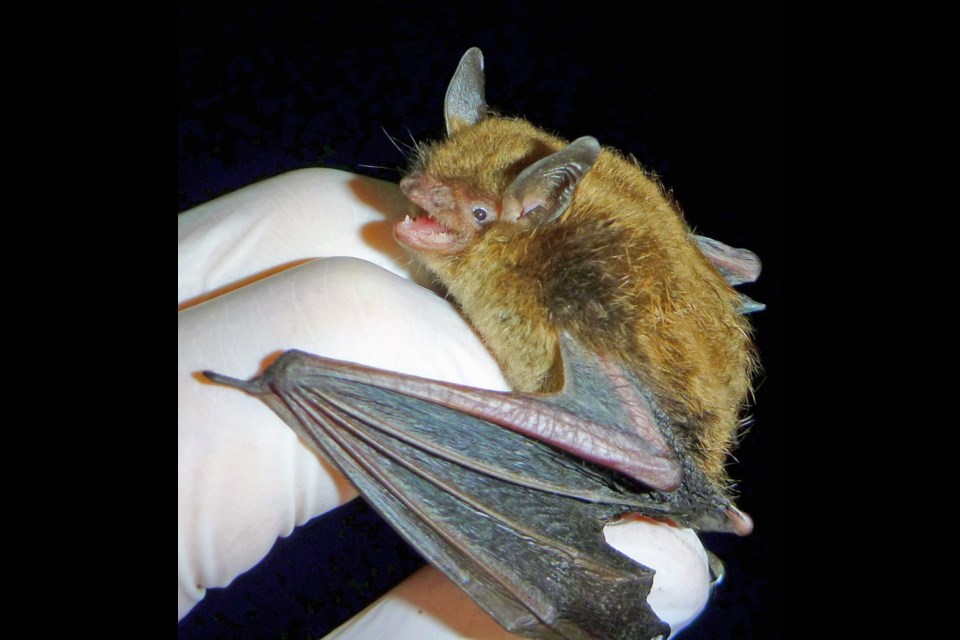Public health officials on Vancouver Island have been inundated with calls in recent days from people concerned about possible exposure to rabid bats.
The influx follows the death of 21-year-old Nick Major of Parksville from a rare viral rabies infection. It’s thought that Major became infected following a daylight encounter with a bat that flew into his hand in mid-May. He developed symptoms six weeks later and died last Saturday.
“We’ve literally had more than 100 calls from the public about potential exposures,” said Dr. Richard Stanwick, chief medical health officer for Island Health.
“A few people have been frustrated that we’ve not been able to respond immediately, but people do need to recognize we are taking the calls and some of the ones have resulted in people being treated.”
A vaccine is available and effective at preventing a rabies infection if administered soon after exposure.
Stanwick said about 15 per cent of callers have received treatment.
“Some of these probably would have come to our attention anyway, because we do get these encounters on a fairly regular basis during the summer,” he said.
Bats are the only carrier of the rabies virus in B.C., and although deaths from rabies are extremely rare — Major’s was only the second reported death in B.C. since the 1920s — public health officials advise anyone who has direct contact with a bat to wash the area with soap and water, and then seek medical attention.
Stanwick said public-health units or communicable-disease clinics are the best places to get assessed.
Robert Montgomery wishes he’d known that before he made the trip from Saturna Island to seek help at the Saanich Peninsula Hospital this week.
Montgomery said he initially wasn’t too worried about handling a dead bat he found in his living room about a week ago.
He was curious, so he picked the animal up and examined it. Then he buried it in his backyard.
He became concerned, however, after seeing news coverage this week about Major’s death and hearing that anyone who had touched a bat should seek medical treatment immediately, regardless of whether they had been bitten or scratched.
The next morning, Montgomery called B.C.’s 811 nursing hotline and was told he needed to receive medical treatment within an hour. After talking to a 911 operator, he decided it wasn’t an emergency and hopped on a ferry to Swartz Bay
Montgomery went to Saanich Peninsula Hospital, where he was told they didn’t have the drugs necessary to treat him.
He was told to seek treatment at the emergency room at Royal Jubilee Hospital instead, where he waited for several hours.
Just after 11 p.m., 12 hours after making his first phone call, Montgomery asked a nurse if there was a phone number he could call or anywhere else he could go for treatment.
“After a little digging and a couple of phone calls, a nurse found a phone number for a communicable-disease centre,” Montgomery said. He called that number the following morning and was told they were overwhelmed with calls, and were prioritizing cases by the severity of the incident.
Montgomery answered detailed questions about how he touched the bat and whether he touched his eyes, mouth, or nose immediately after.
“They decided I was at reasonably low risk,” he said. “They were only giving vaccines to people who had puncture wounds or bites.”
Montgomery isn’t sure why none of the health-care professionals he consulted throughout the day seemed to be aware of the communicable-disease centre.
Although he spent a day and a half travelling and about $200 on ferries and a hotel, he said he doesn’t mind. He hopes sharing his story will help others learn what to do if they come in contact with a bat.
Stanwick said it’s unfortunate that Montgomery ended up in emergency departments, which don’t typically handle screening for rabies.
“The good news, at least from our perspective, is that we were able to link up with him eventually and provide the necessary advice.”
Stanwick stressed that public-health officials do want to speak to anyone who has had contact with a bat so they can properly assess the risk. He said it sometimes can be difficult to see a puncture wound or scratch because bats’ claws and teeth are so small.
“The other one we worry about, and have concerns, is that sometimes people have breaks in their skin or they suffer from eczema or some other basic condition that breaches the skin’s normal defences,” he said.
“This is why we don’t even recommend patting bats, because they groom themselves with their saliva. So if you have a cut, or a break in the skin, and you rub it over bat fur that’s been recently licked, that is potential for communication.
“We think bats are critical to the ecosystem, but respect them at a distance.”
The co-ordinator of the B.C. Community Bat Program says that’s good advice for how to behave around all wild animals.
“I think the key thing is to not touch wildlife, and if you do have an encounter, to contact public-health immediately,” said Mandy Kellner. “That’s what people need to do to be safe around any animal, including bats.”
She noted, however, that less than one per cent of bats in the wild test positive for the virus.
Media reports have focused largely on the fact that 13 per cent of bats sent for analysis test positive for rabies, but officials say that’s a skewed statistic, since those animals were more likely to be sick or dead in the first place.
“There’s kind of a misconception about how many bats are rabid,” Kellner said.
“Still, it’s such a horrible disease that it should be first and foremost in anyone’s mind if they come into contact with a bat. But people don’t need to be freaked out about every bat they see.”



